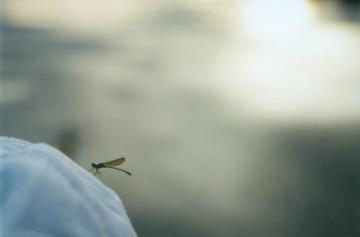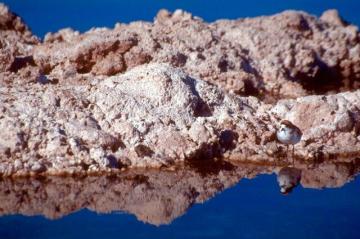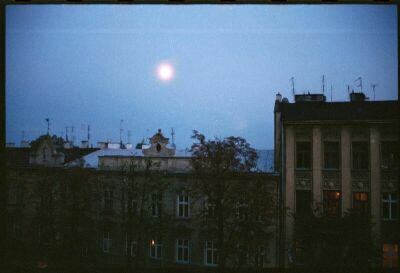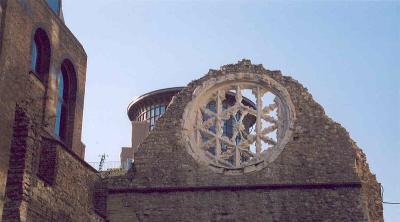
Nikon F6006, Sigma 80-250 mm, f/5.6, UV Filter, Fujichrome Sensia 100.
One of the most annoying things while travelling along the Amazon river, Brasil is the amazing amount of mosquitos. The shot was during sunset.
(This series of wildlife photographs is to highlight the Wildlife Photographer of the Year 2003 Award and exhibition).
Category: Photography
Wildlife Photographer of the Year 2003
I have just been to the Wildlife Photographer of the Year 2003 Exhibition at the The Natural History Museum, London. It had an amazing display of photographs in various categories like Animal Portraits, Composition and Form, The Underwater World, In Praise of Plants and more.
It was great to always see the equipment used and the exposure settings. One amazing photo was taken in the middle of the night, with three subsequent flashes and a shutter speed of 24 minutes (!). It only took the photographer 6 months to make exposure tables to enable him to take the shot.
If you cannot attend the exhibition then at least browse the web site and be inspired.
To highlight this occasion I have searched my collection and will be showing some wildlife photographs during the next week.

Nikkon F6006, Nikkor 300mm, f/11, UV Filter, Fujichrome Sensia 100.
A native bird drinking in the Los Flamencos National Reserve, Chile.
Rooftops in Krakow

This view is from the The Wawel Royal Castle in Krakow, Poland. It was quite late and I was lucky that there was enough light to capture the roof tops with the moon in the background.
Of course I used the self timer to avoid motion blur, just like described in earlier advice on low light photography.
Old meets new

Hidden in the back streets of East London you will find some breathtaking views.
Like the proud remainders of a 14th century building with a futuristic 21st century tower in the background.
Once there lived one of London’s richest business men in the old building; now the modern tower is occupied by a multitude of offices.
Evil Baby
I friend (Pedro) pointed me in the direction of a photography manipulating tool called FaceFilter. It lets you change the facial expressions of a subject fairly easily by using a set of default templates.
While you would be able to do most of the tricks in your favorite photo editing software, FaceFilter will let you do the manipulations much quicker.
You can also discover some things about facial expressions that you might have realised before.
I tried the 7-day trial and had loads of fun with the “evil baby” below, see for your self.
Original baby |
 Angry baby |
 Chubby baby |
 Making a face |
 Making another face |
 Mean baby |
 Not my baby |
 Sleepy baby |
 Young (?) baby |
Luckiest man in the world wide world and possibly the rest of the universe; this and any parallell
Just wanted to point out that there are new B&W photos from the Polish wedding in Zakopane.
Most were taken by Carla (you are getting good) some by me and some by various drunk guests.
Photos
Low light (night) photography
Night shots are characterized by low light. The camera shutter needs to be open for prolonged time to get enough light for a proper exposure. The drawback is that there is risk for blurred photos if your camera is not steady enough.
One common tricky scenario is a foreground (FG) object, e.g. a person, in combination with a back ground (BG) view, e.g. a night time city sky line.
Below are some easy steps that that will let you take better night shots.
En route to work







(En route)
Portrait shots
 How to get crispy shots of the subject with a blurred background? You need to know what depth of field is and what determines it.
How to get crispy shots of the subject with a blurred background? You need to know what depth of field is and what determines it.
Although the exact focus occurs in a single point there is a range (in distance) in which there appears to be focus in your photo. This is the Depth of Field (DOF).
The DOF is affected mainly by apperture size and focal length (zoom). The bigger the aperture (lower f-number) and the longer the focal length (more zoom) the smaller the depth of field is.
So next time you are taking a portrait shot, max up the aperture and use a zoom lens (80mm+).
Of course, you can also use the portrait mode ![]() if you have a newer SLR camera and it will do exactly the above for you.
if you have a newer SLR camera and it will do exactly the above for you.
More on depth of field
PS Photo taken by Tomas Hancka (more photos)
